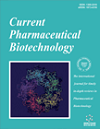-
oa Editorial [Hot topic: Current Strategies in Lead Discovery (Guest Editor: Maria L. Webb)]
- Source: Current Pharmaceutical Biotechnology, Volume 11, Issue 7, Nov 2010, p. 720 - 720
-
- 01 Nov 2010
Abstract
The inter-discplinary science of Drug and Lead discovery continues to evolve and it does so by bringing more technologies to the lab. In the last decade we saw the advent of technologies that change the way we approach target biology (the human genome project), build compound collections (combinatorial, automated and contract synthesis), conduct screening (high throughput and high content screens), and ultimately advance compounds from discovery to development. While the rate of NMEs is constant or even down, the “easy targets”, clearly a qualitative term, are done. Now we are faced with solving the challenges of hard targets. In the next decade we will see more technology driven advances as we continue to put safe and efficacious medicines in the market. What are these new technologies and approaches? A few of them are high-lighted in this special issue of Current Pharmaceutical Biotechnology. First, David Dunn et al. discuss systems biology in “Taking a systems approach to the discovery of novel therapeutic targets and biomarkers”. Systems biology focuses on the integrated roles of cellular pathways and networks rather than single biomolecules as we have done previously. A systems biology approach requires technology that can generate and analyze, large multi-dimensional data sets. Changes in phenotype are evaluated in high content phenotypic screens, and changes in transcriptional and protein networks are evaluated against collections of small molecules, peptides or siRNA to identify agents that modulate the cellular phenotypic signatures. Such agents can be used to analyze pathways and networks. The power of this technology is its ability to generate patterns of complex biological data. These patterns can then identify new pathways and targets that are relevant to drug discovery. Next, Attila Seyhan et al. have contributed a critical discussion on “RNAi screening for the discovery of novel modulators in human disease”. RNA interference (RNAi)-mediated gene inhibition allows for systematic loss-of-function screens to be conducted to interrogate the biological functions of specific genes and pathways. The use of RNAi in various screening formats and against various targets is discussed. In addition to finding new targets and cellular pathways and networks, we discuss new twists to screen old targets. Jim Beasley and Robert Swanson have contributed a paper on sophisticated counter-screening in “Pathway-specific, species, and sub-type counter-screening for better GPCR hits in HTS”. GPCRs are well-trodden targets with great success as medicines, but some notable failures as well. Time and cost may be saved if GPCR modulators are assessed in terms of signaling pathway selectivity, species selectivity, and selectivity against closely-related family members at the stage of high-throughput screening. Examples of how these kinds of selectivity have been addressed during screening are given. In the realm of academic based screening, Rathnum Chagaturu et al. discuss the progress and challenges of academic screening in “Open access high throughput drug discovery in the public domain: A mount everest in the making”. In the current drug discovery landscape, the pharmaceutical industry is embracing strategies with academia to maximize their research capabilities and feed their drug discovery pipeline. The goals of academic research have therefore expanded from target identification and validation to probe discovery, chemical genomics, and compound library screening. This trend is reflected in the emergence of HTS centers in the public domain. The various facets of academic HTS centers as well as the implications on technology transfer and drug discovery are discussed, and a roadmap for successful drug discovery in the public domain is presented. Where do all of these new technological approaches to targets and screening take us? To the interrogation of a target through medicinal chemistry. To be sure, chemistry is advancing as well and Suresh Tice and his colleague discuss “Structure based design of 11b-HSD1 inhibitors”. Controlling elevated tissue-specific levels of cortisol is a novel therapeutic approach for treating metabolic syndrome. Medicinal chemistry efforts to design of 11β-hydroxysteroid dehydrogenase 1 (11β-HSD1) inhibitors have been aided by high resolution X-ray crystal structures of inhibitors in complex with the enzyme. Diverse classes of molecules, binding modes, structure-activity relationships, and pharmacodynamic data of such inhibitors is presented.


